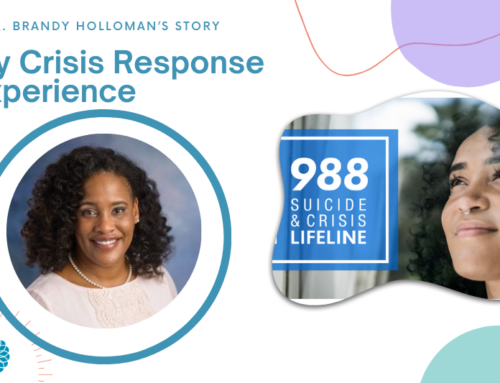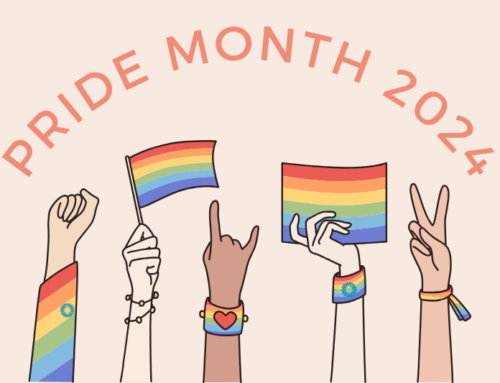This post originally appeared on the National Training & Technical Assistance Center for Child, Youth, & Family Mental Health (NTTAC) website. It is written by Change Matrix Change Consultant and Racial Equity Trainer Evelyn Clark.
Young people who have been touched by the juvenile justice system occupy many different levels within the behavioral health workplace. They are being hired for opportunities to serve in roles as peer support, family support, youth coordinators, specialists, managers, and other leadership staff. A critical goal of hiring individuals with lived experience in the juvenile justice system should be to enhance the work, the workplace, and the systems of care, and ultimately to enhance outcomes for youth and their families. But what happens when critical conversations and hard truths are avoided or prohibited? What happens when young people experience tokenism from systems and burnout from sharing and reliving their trauma over and over again?
In my role as a Youth Certified Peer Counselor, I have experienced and witnessed countless young people experience tokenism. In my experience developing youth committees and councils, I see youth voices in action but I rarely see real systemic action taking place. There are many examples of this inaction. First, many young people have voiced throughout the years that there are policies within the juvenile justice system that have been created to further marginalize Black and Brown young people. They are waiting for these policies to change. Second, young people say they have voiced time and time again their need for mental health treatment to be culturally responsive, and for better transition services upon release. However, young people continue to be released with little to no services. Worse, they are reporting that they are even more traumatized after leaving incarceration systems than they were before entering the system.
This summer, I attended the 2021 virtual Coalition for Juvenile Justice Youth Summit, chaired by Aaron Toleafoa. Aaron is a leader who is making real and lasting change while he is incarcerated. This Summit was designed and developed by young people with lived experience in juvenile justice systems across the United States. They spoke passionately about re-entry programs, the lack of services for young people, and the dramatic impact of the juvenile justice system on those youth who identify as Black, Indigenous, and People of Color (BIPOC). The keynote address by Nell Bernstein, author of Burning Down the House: The End of Juvenile Prison, provided a strong foundation for discussing the treatment of young people in the juvenile justice system and how current policies, rooted in white supremacy, create modern day slavery.
The young people who participated in the Summit all agreed — the juvenile justice system needs to be restructured. These youth told their stories about a system of incarceration that does not work, especially for BIPOC youth. As I listened to their stories and experiences, I began to reflect on this system and to reimagine the possibilities. How could the juvenile justice system be redesigned to hold young people accountable, while also ensuring they were not punished for the rest of their lives, but redirected in ways that support them to be the best versions of themselves? How could the system better support young people with histories of significant traumas, who commit crimes, in receiving effective and consistent mental health treatment? How could we facilitate settings where no isolation exists, but instead offer safe environments where true and culturally responsive healing can occur?
Exploring Community First
How do we move towards a world where the juvenile justice system is no longer a first response or a last resort? Community involvement is the answer. Community engagement is a critical and often-neglected part of the continuum of care. A young person’s community is who youth and families identify as their natural supports. It can be the barber down the street, or people in their places of worship, mentorship programs, and cultural centers. Many times, systems of care focus on other systems, like social services, to wrap around children and families; however, recent restorative justice work demonstrates that families thrive when they are supported by those with similar experiences and who understand their community. This can include both formal and informal supports and organizations.
Various wellness and community-based organizations are stepping up and stepping into a young person’s life after they have committed a crime. Instead of going to a juvenile justice center, the youth is instead required or “sentenced” to work with a community program. This fosters opportunities for young people to be held accountable and receive support within their own communities. Examples of communities doing this work include the following:
Community Passageways (Seattle). Community Passageways partners with schools to disrupt the school-to-prison pipeline. They offer school-based programming, including healing circles, culturally relevant curricula and training, and mentorship opportunities.
King County’s Continuum of Community Engagement (King County, Washington). Community engagement exists on a continuum that requires dedicated attention and accountability. Learn more about the community engagement continuum and strategies for moving forward at King County’s Continuum of Community Engagement and What Is Community Engagement?
Resources
- In Community x By Community
This is a documentary on a multi-organization partnership that focuses on racial equity and justice for youth and families impacted by juvenile incarceration. - Breaking Down the Walls
This article highlights lessons learned from successful state campaigns to close and create alternatives to youth prisons. - No Kids in Prison
This national campaign to end youth incarceration and invest in community-based supports, services, and opportunities provides a variety of videos, sample youth programs, and other resources for community-driven alternatives to incarceration that enable justice-impacted youth to thrive in their communities.
Exploring Tokenism
During the Summit, young professionals who have lived experience in the juvenile justice systems shared that they often feel tokenized in their workplaces or in the committees they are on. They feel their work is frequently highlighted primarily as a way to make the system look good. They added that they feel as though they are not being heard because re-entry services are not being offered in culturally responsive ways.
Speaking truth to power, the young professionals shared that they are not compensated at an equitable rate (and sometimes not at all) as system partners. Young people across the nation shared the dynamics that occur when committees and councils consist of a majority Caucasian juvenile justice center staff working with a majority of young Black and Brown people involved in juvenile justice systems. Even worse, some young people voiced that they were being told what to say during committee and council meetings in order to avoid making the juvenile justice systems look bad.
If an organization truly desires the authentic voices of young people with lived experiences in juvenile justice systems, young people must be given the opportunity and freedom to speak authentically and without fear of retaliation. This means that providers must become comfortable with being uncomfortable and hearing things they don’t like, disagree with, or may not fully understand. It also requires being aware of personal privilege, releasing power dynamics, and redistributing power. It’s impossible to truly transform systems without authentic and culturally diverse voices, input, and participation (at all leadership levels) by those who have been impacted by the systems.
Resources
- Avoiding Tokenism When Engaging Young People
This infographic by the Center for Social Innovation provides a colorful, easy to read description of tokenism and how to avoid unintentionally tokenizing young people. - What is Tokenism and How Does it Affect Mental Health?
This 2020 article by Claire Gillespie describes the impact of tokenism on the mental health of the people placed in that position. - Stipending Youth
In this infographic, Youth MOVE National presents a wealth of information related to compensating youth and young adults for sharing their expertise. - Engaging Young People in Juvenile Justice Reform
This brief by the National Collaboration for Youth and the National Juvenile Justice Network addresses the issues to be considered when initiating an effort to incorporate youth in reform efforts. - Youth Collaboration: Tools and Tips from Youth State Advisory Group Members
Published by the Coalition for Juvenile Justice in Washington, DC, this report summarizes the results from the 2016 survey of State Advisory Groups and identifies ways to deepen partnerships with youth members and ensure the partnerships are truly youth-led.
Future Action
It is not enough to just have youths’ experiences shared, but it is imperative for them to see their voices amplified to dismantle racist policies, address systemic inequities, and challenge the dominant power dynamics in many juvenile justice systems. Effective policies and procedures foster and promote effective treatment, robust re-entry prevention strategies, and the empowered mental well-being of each and every young person touched by the system. This requires continuous monitoring, input from those who are impacted, and holding system staff and partners accountable to each other and to the youth and their families as well.
During the Summit, author and advocate Nell Bernstein provided a powerful look at the roots of the juvenile justice system, and spoke to the critical need to find better ways of treating our young people. In her book Burning Down The House, Nell provides recommendations for drastically changing the juvenile justice system.
Resources
- Repairing the Breach: A Brief History of Youth of Color in the Justice System
This essay, published by the W. Haywood Burns Institute for Youth Justice Fairness and Equity, describes the history of racial inequities inherent in the juvenile justice system. - Racial Disparities and the Juvenile Justice System: A Legacy of Trauma
This 2013 brief published by the National Child Traumatic Stress Network outlines the historical processes that serve as the foundation of the current juvenile justice system and serve to perpetuate racial/ethnic disparities. - Race and Juvenile Justice
In this 2019 presentation for the National Association of Criminal Defense Lawyers, Alisa Rachelle Blair, LA County Public Defender, described the involvement with the criminal justice system for children and youth of color, a guide to understanding racial trauma, and recommendations for using trauma as mitigation in litigating juvenile delinquency cases.




